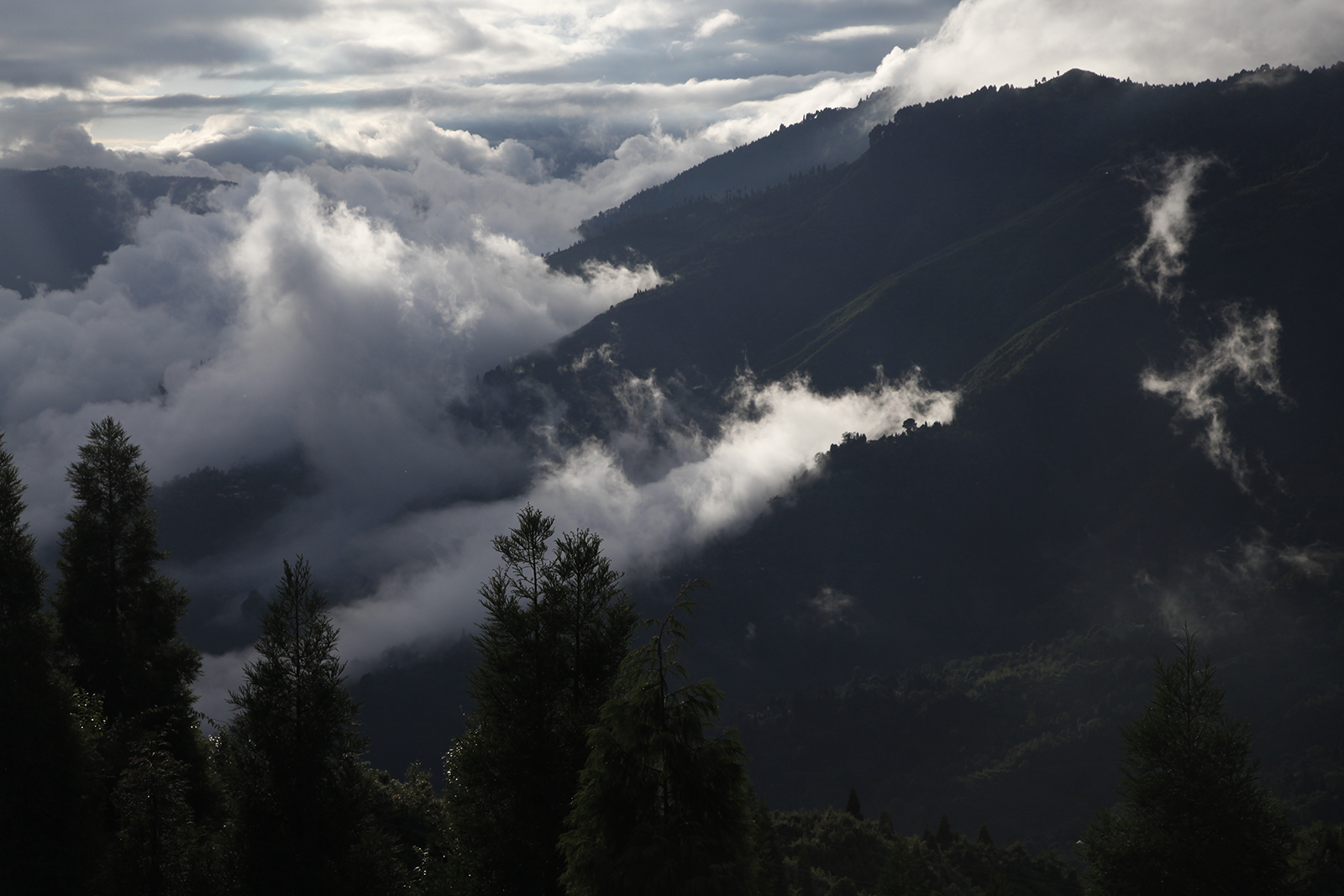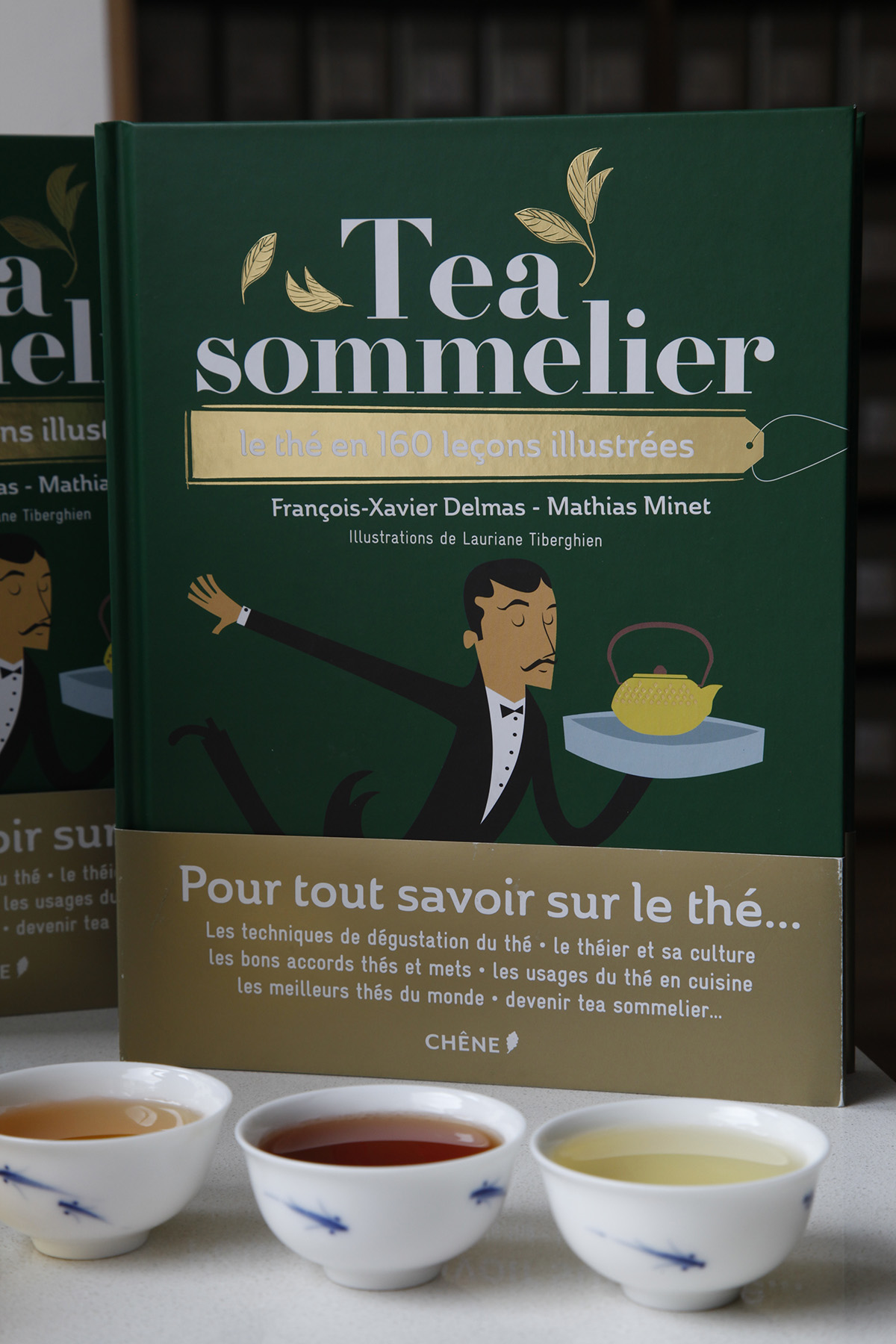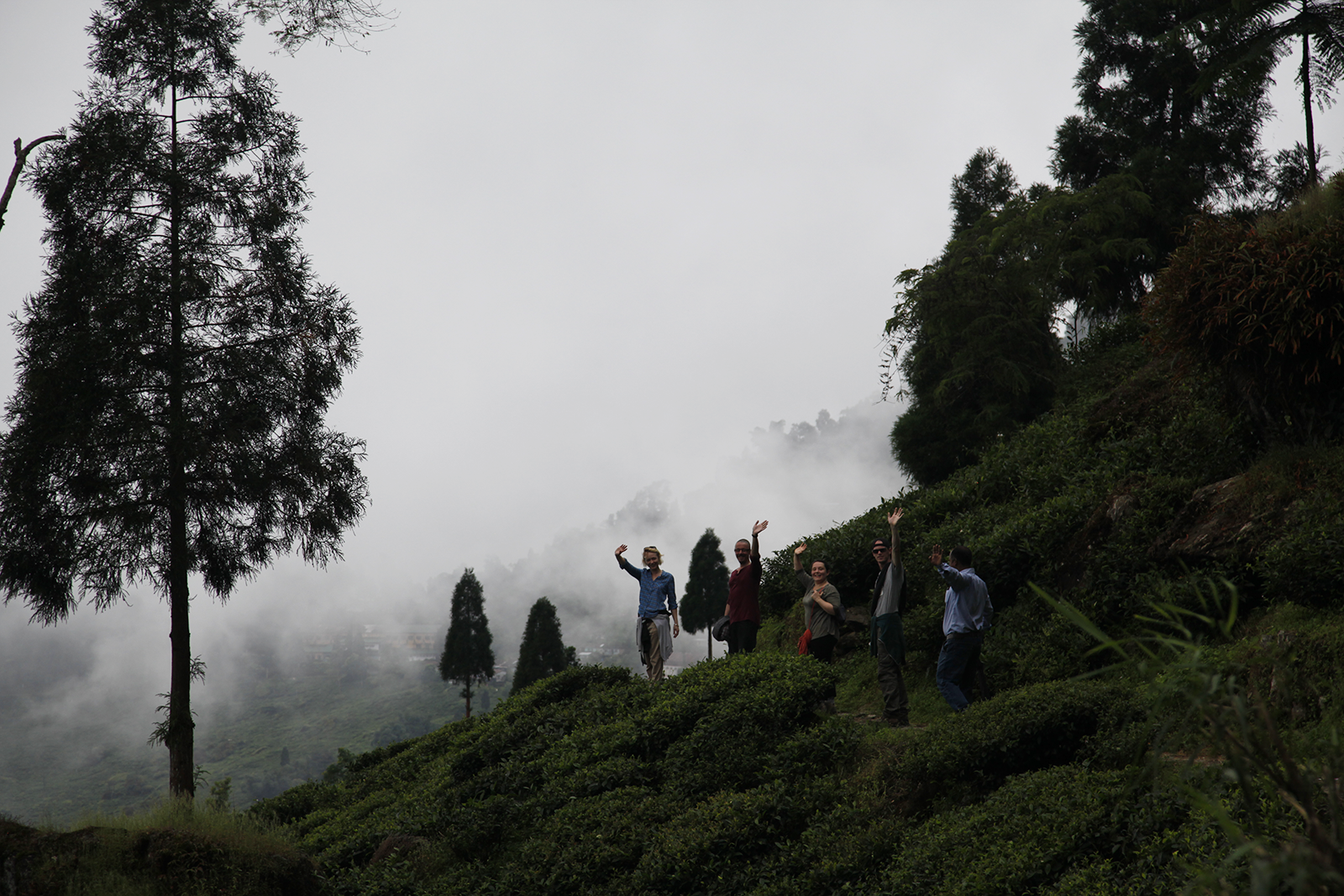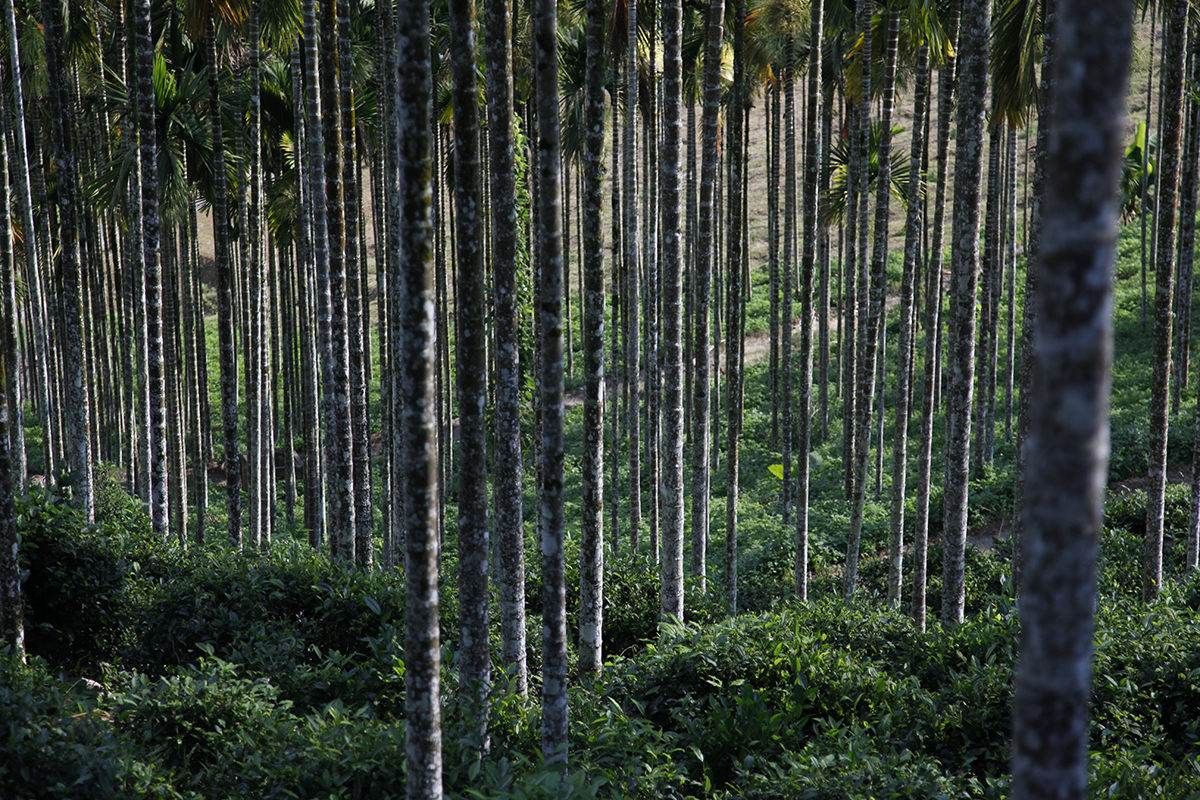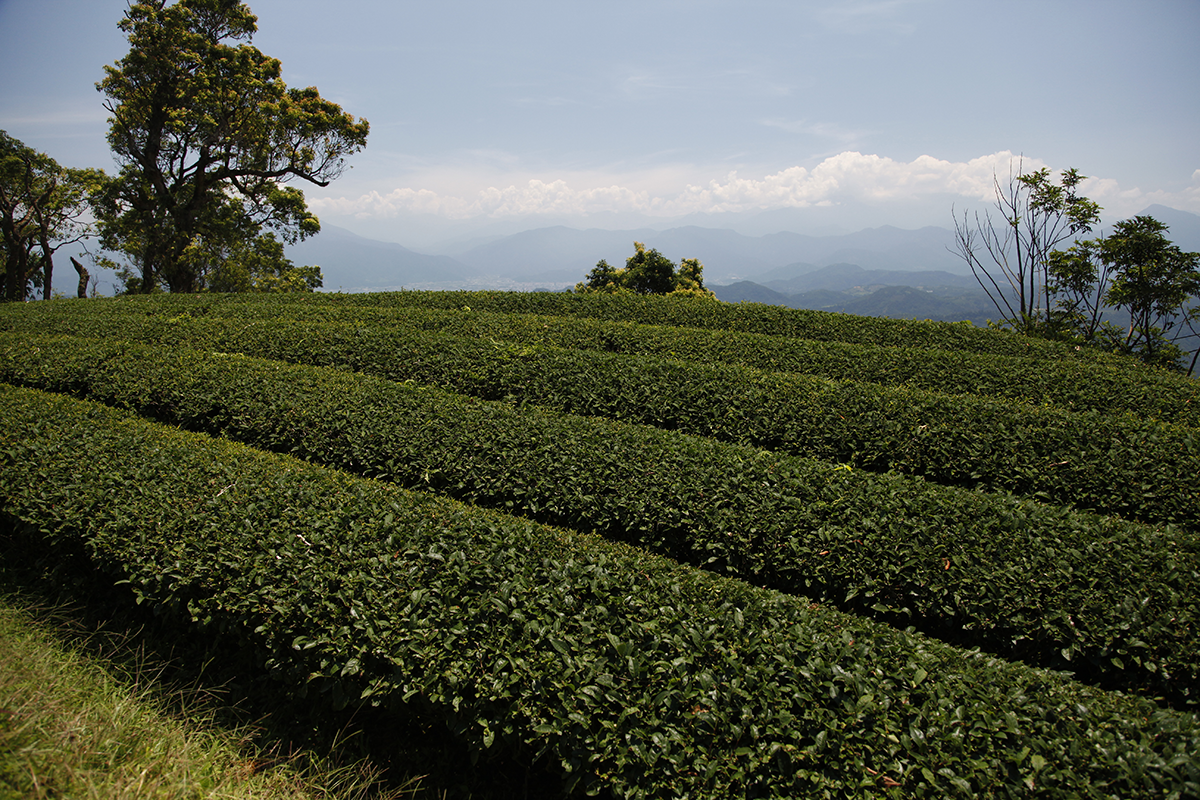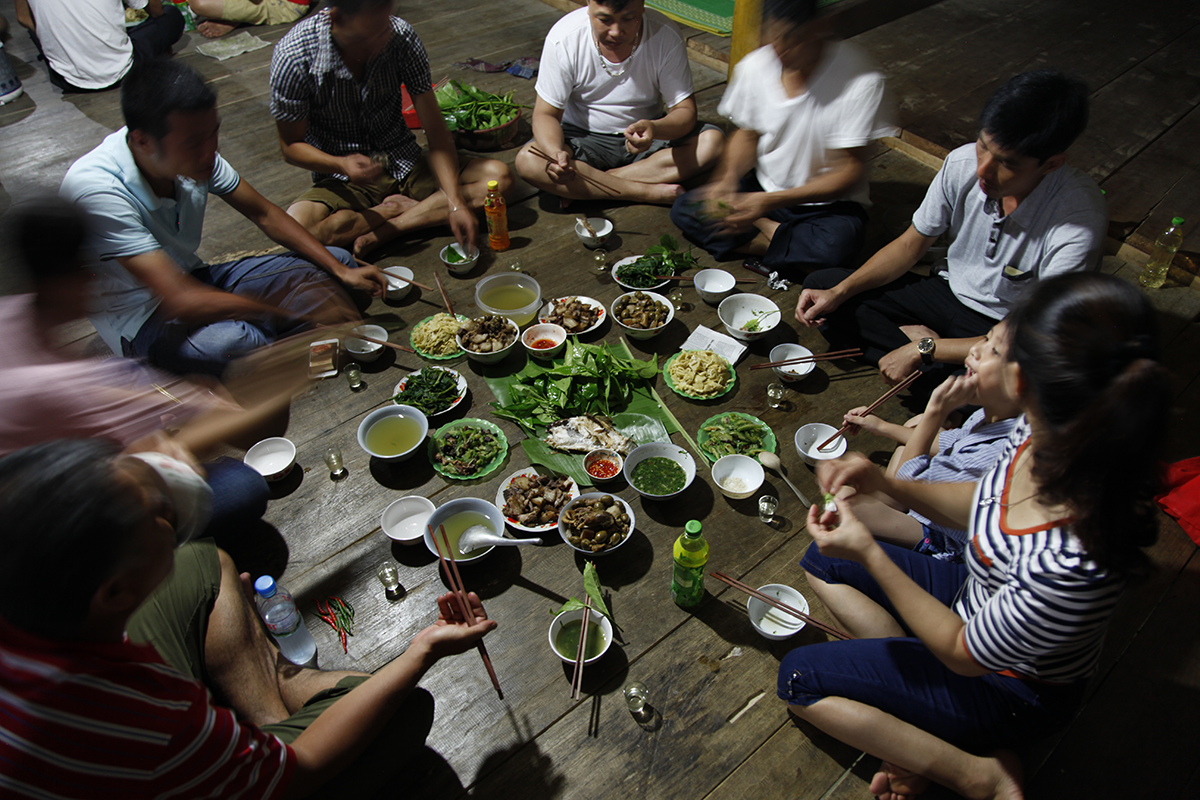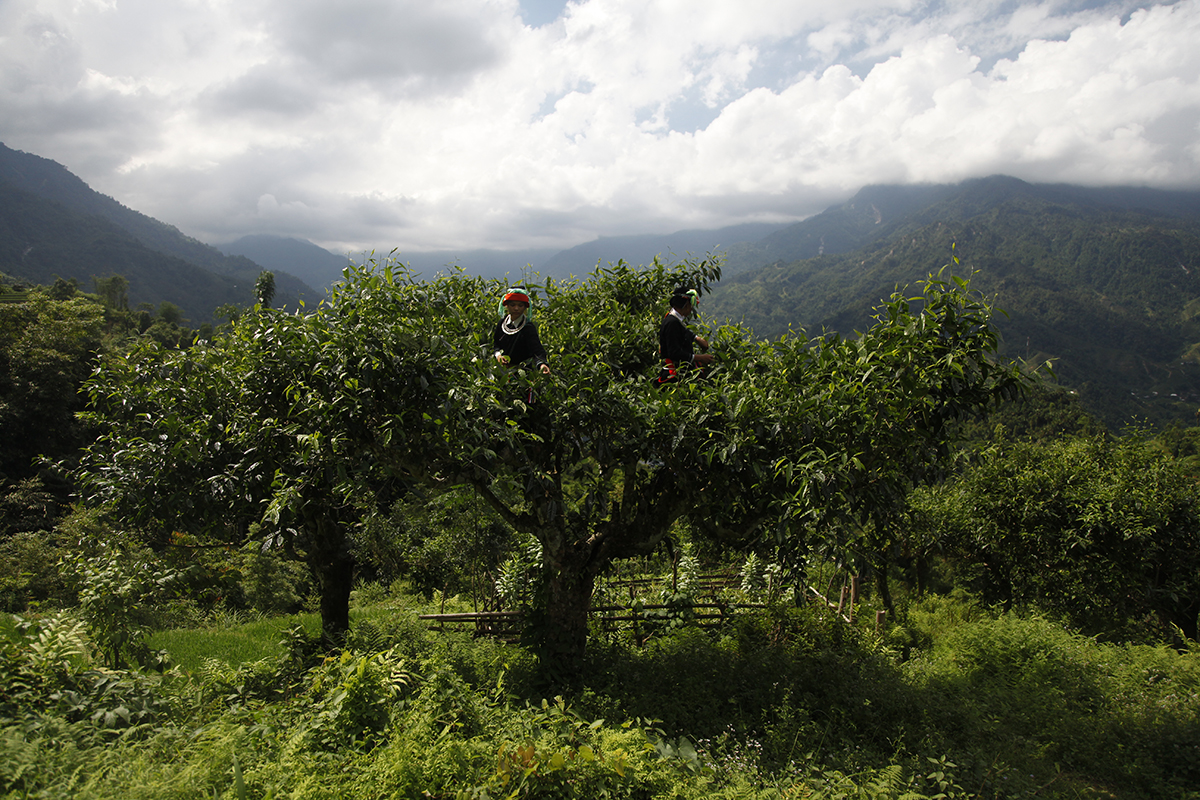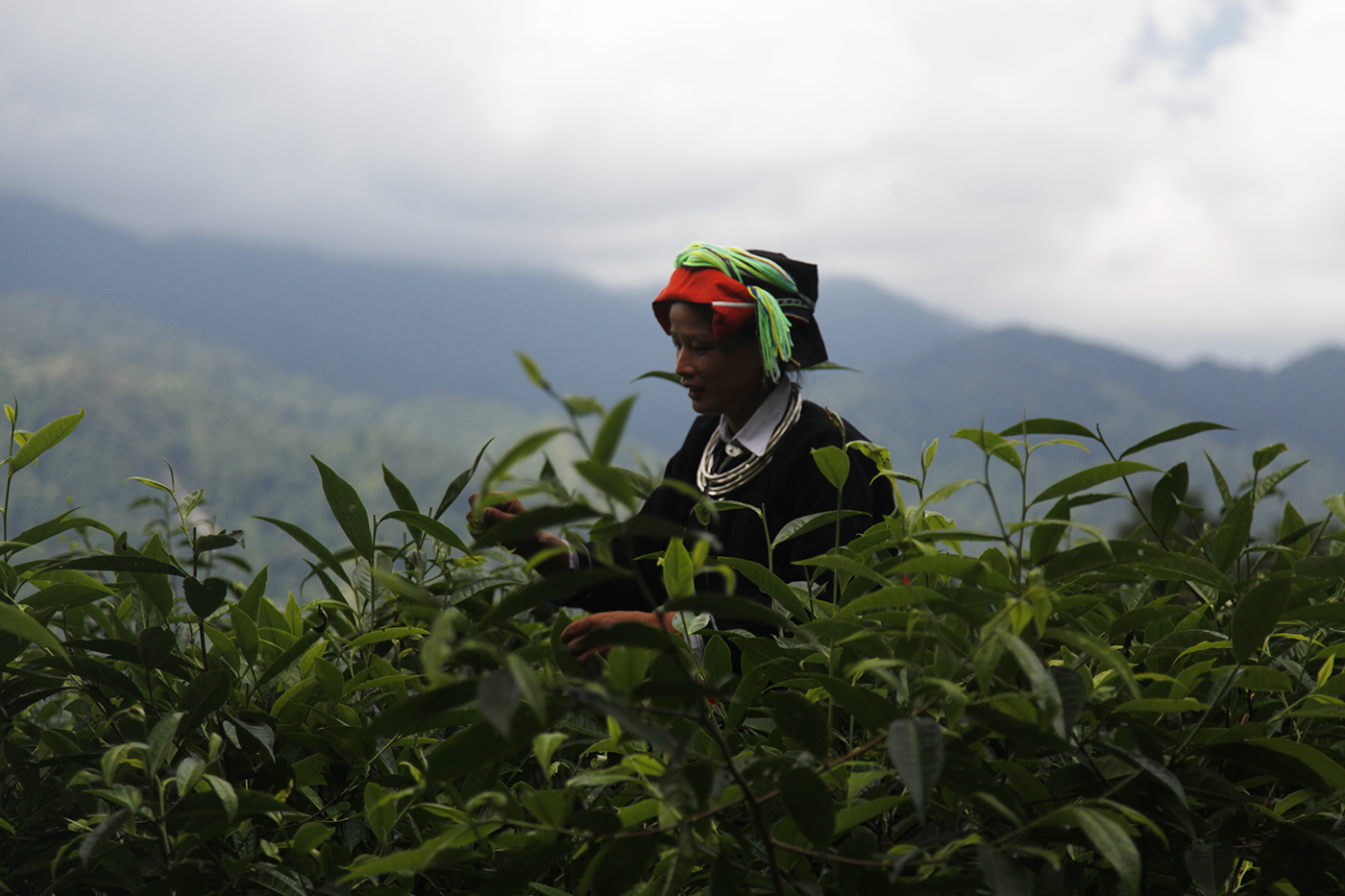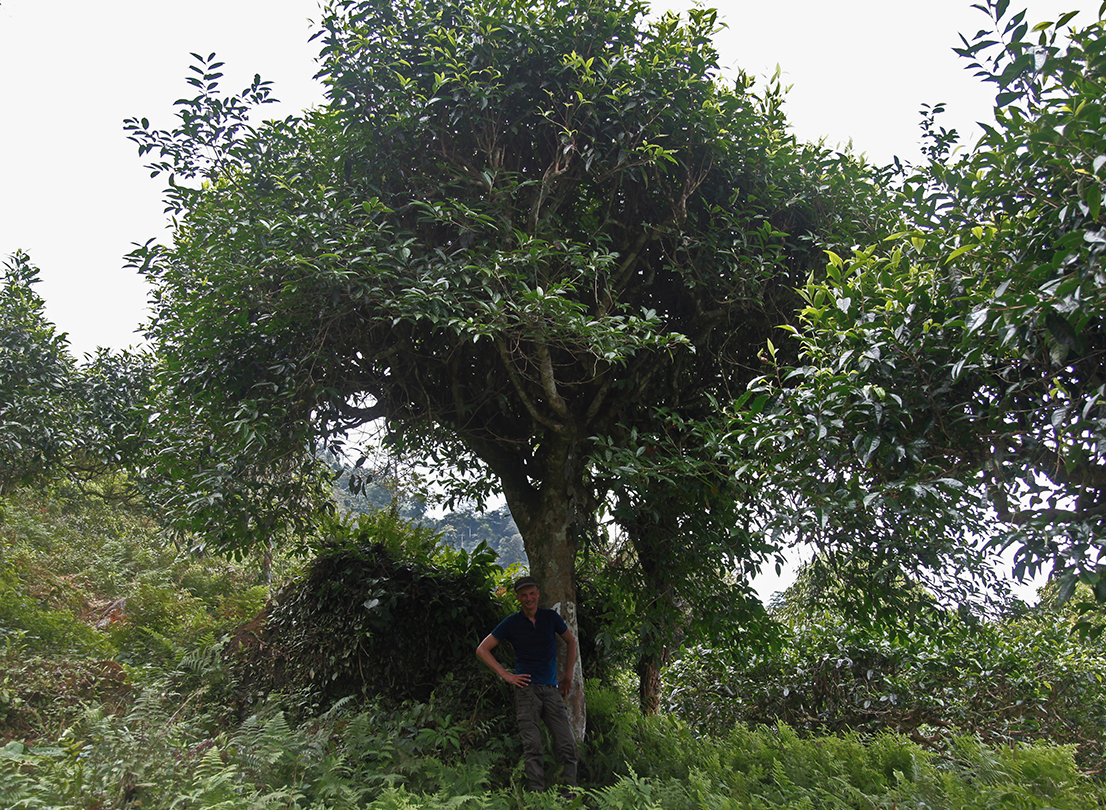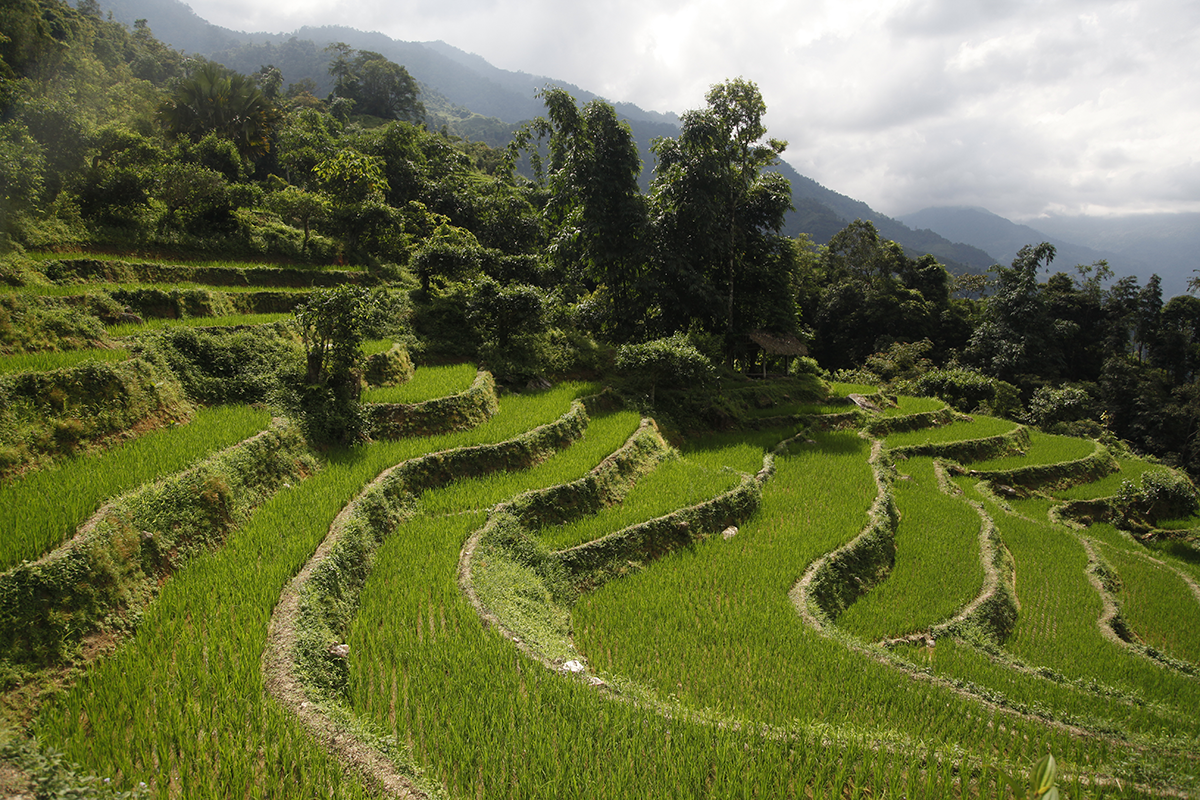The landscapes of Darjeeling are among the most incredible in existence. Not because they’re better than anywhere else in terms of their beauty, but because of the unique speed with which the scenery in this region changes. You can go from a hailstorm to a beautiful blue sky in less time than it takes to say those words, and the mist can be so thick that sometimes, when walking in these parts, you even lose sight of the ends of your shoes. After all, the name Darjeeling comes from the Tibetan “Dorje Ling”, which means “the land of storms” – here, the skies rule. Naturally, these climatic variations and the extreme temperature changes that accompany them have a major influence on the quality of the tea, which is why, in Darjeeling and in Nepal, the characteristics of teas picked in the spring, summer and autumn differ so much. In no other tea-producing region of the world do we see such variation between teas from one season to another, in terms of their organoleptic qualities
ARCHIVE FOR 2016
“Tea sommelier”, the book
I’ve been dreaming about it, and now it’s here. I want to talk about this book, published by Les Éditions du Chêne, which will be in bookshops this week. The project of writing the book, entitled “Tea Sommelier”, has been very important to me for a long time. Prestigious hotels in Europe, America and Asia have been asking me for several years to help them create tea and food pairings. One day a hotel in Hong Kong asked me which tea would go best with caviar; another time a Michelin-starred New York chef had so many questions to ask me, as he was discovering all the ways tea could be used in the kitchen. That’s what has changed: tea is no longer reserved for breakfast, brunch or teatime, it’s now an accepted presence at the table, in the kitchen, even at the bar. Tea is also being prepared at room temperature, and sometimes it’s even served in wine glasses. My friend Mathias and I cover all these topics in great detail in the book, in a serious yet fun way, accompanied by many illustrations. Naturally we also discuss the tea plant and its cultivation, along with the different types of tea and the various ways it can be prepared and consumed. The book is detailed, uplifting, accessible, and can be understood by anyone. We hope you enjoy reading it as much as we enjoyed writing it.
Sharing tea
I’ve just got back from Darjeeling. Every year I invite store managers to visit the plantations with me. I remember the beginnings of Palais des Thés. I spent the first three years of this great adventure in the shop, behind the counter, serving customers. At the time I’d never seen a tea plant. Then I packed my bag and set off to explore the tea mountains of China, Japan and India, followed by other countries. This experienced completely changed me and the connection I had with tea. Tea became my passion. This connection became strong, rich and powerful. My life changed.
That’s why I want our store managers to have the same opportunity as I did, to discover tea in its natural surroundings, to meet the people who work with tea, from the pickers to the farmers and those who manufacture it. The opportunity to understand the climate, the soil, the varieties and the production methods. Tea is a whole world in itself, just like wine. You only need to alter one aspect slightly – a change in altitude or orientation, a less steep slope, a hybrid cultivar, a downpour during processing, or whatever – to give tea a different flavour. Nothing replaces hands-on experience. These store managers return with joyful hearts and wonderment in their eyes. Now it’s their turn to dream of those misty mountains, of the people they met, the smiles they exchanged. And above all, to share their dreams with their staff, their customers and the people around them. You have to experience tea to understand it.
A vertical garden
Tea has a very good character. It gets on well with many plants. Here, high up in Taichung (Taiwan), it has a close relationship with Areca catechu. This palm provides the farmer with a supplementary income and our bushes with a little shade. It also lends an impressive verticality to these tea gardens, which are usually very horizontal.
High teas of high quality
In the centre of the island of Taiwan they produce Gao Shan Chas, high-altitude teas that are rolled into pearls. They are semi-oxidised teas that are withered, then lightly oxidised, roasted, rolled, dried and packaged. In the cup, the best of them develop fresh vegetal notes and a lovely opulent flowery bouquet (rose, hyacinth, jasmine), sustained by buttery, milky notes with an occasional hint of vanilla. These high-quality teas are produced in limited quantities.
Following tradition
After a tiring day of walking for more than six hours to reach the old tea plants and then returning to the village, I needed to recover. The food in this region of northern Vietnam is delicious. With the Dao people who were hosting me, I followed tradition: throughout the meal, I toasted many times with the people who raised their glass to me. Each time I had to down my drink in one, and shake hands with them. Between slugs of the local rice alcohol, I took time to appreciate every tasty dish. The meals were prepared in the room where we sat to eat, on the ground. As soon as the meal was over we lay down on mats, in the same room, with nothing to separate us apart from a mosquito net between each person, not even from the jungle outside, with all its noises that interrupted my sleep. I could hear noises from the other mats: a mother breastfeeding her baby, someone else snoring loudly, another person coughing, and other various sighs and mutterings. By the time the cock crowed I’d been awake for some time, and I went outside to walk, to watch the day break from the edge of a rice field above the village. When I returned for breakfast and sat down, I was surprised to see the master of the house offer me more rice alcohol, and enthusiastically raise his glass in my direction. I declined. I couldn’t believe it, I was dreaming of tea, but in vain; my host was serious. He grew gloomy at my protestations, and would have been offended if I’d continued. Travelling is all about adopting the traditions of the people who are kind enough to welcome us, so I swallowed my drink. Later, he offered me a well-deserved tea, a tea I’d rarely longed for so much.
A mountain-top harvest
It’s not easy to reach the wild tea plants growing on the border between China and Vietnam, especially in the hot season. The stifling, muggy air slows you down, and the leeches that infest the region take advantage and cling on. You walk beneath a high sun. The humidity in the air is palpable. But once you’re out of the jungle, after a good three hours of walking, you find yourself high up, among the famous tea plants that have been left to grow like trees. You can enjoy this beautiful sight, especially if you’re lucky enough to arrive as the leaves are being picked. (To be continued.)
A mosaic of cultures
In regions where tea is picked from plants growing in the wild, whether that’s in southern Yunnan (China), northern Laos or here, in Vietnam, the villages are mainly populated by ethnic minorities. There is a great diversity of these minorities. Each one has its own customs, and sometimes its own language. When you walk through the mountains in these regions, you get to experience this mosaic of cultures. This woman, who is busy picking tea leaves from the top of a tree, belongs to the Dao community. (To be continued.)
300 years old and it still has all its leaves
Here’s what a tea plant looks like when it has been left to grow, rather than being kept low so that its buds and shoots can be picked easily. From what I’ve been told in this far-flung corner of Vietnam, this camellia could be about 300 years old. I’m no expert in dating trees, but what I do know is that some very good teas are made using leaves harvested from these tea plants… (to be continued).
Tea and rice
Tea and rice have a lot in common. Firstly their shades of green, with the occasional touch of yellow, so delicate and varied, so intense. A feast for the eyes. I could spend my life photographing paddy fields. I often walk around them, carefully, placing one foot in front of the other along the low wall that surrounds them, in order to reach tea plantations that are even higher up the mountain, like here, in northern Vietnam. Some tea gardens have no road leading to them, so you set out on the sinuous path of the paddy fields. At least here it’s not steep, because rice grows on flat ground, either in fields or on terraces. Rice, unlike tea, needs stagnant water. Tea needs plenty of water too, but the water must be free-flowing, not sitting around its roots. That’s why tea likes slopes, while rice likes flat land. Flat versus slope, valley versus mountain, stagnant water versus flowing water; tea and rice are like two brothers who are completely opposite yet inseparable. They’re always together. They have another important human characteristic: of all agricultural products, these two crops employ the greatest number of people in the world. (To be continued.)

